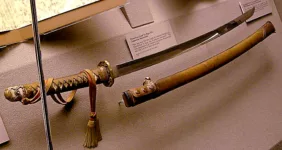There is a deep history of the samurai sword, and it is believed that the soul of a real samurai resides in this katana sword.
We tried to take a closer look and discovered some surprising facts behind the making of a katana sword. Probably the devotion and dedication took to make each of this masterpiece makes the samurai sword a living legend.
Well, here we will uncover the mysteries behind the legend in the making and tell you the real Steel story of the samurai.
Smelting the steel
The original samurai sword is made of pure steel only; this call for the smelting of raw iron ore and charcoal for over three days and nights. The Japanese samurai sword is no one day job, though! Well, the smelting process is done in a rectangular furnace made of clay called the Tatara. This process of yielding pure steel also called the tamahagane, ie, the jewel steel which is used in making the samurai katana sword,
Dissolving the carbon
While smelting the steel or tamahagane, it is never allowed to let it reach the molten state. It is done to make sure that only a specific percentage of carbon gets dissolved into the tamahagane. Call it art or science, but the percentage content of carbon in a katana varies from 0.5 to 1.5 percent by composition.
All this is to make two types of sword one with high carbon content and other with low carbon content. The high carbon content in steel yield a very hard and razor sharp sword while a low carbon content steel makes a sturdy and shock absorbing sword. The process of dissolving carbon is done by the master makers of katana on the last day, ie, the third night when they open the clay furnace.
Removing the impurities
Only the best tamahagane pieces are sent to expert master swordsmiths. These swordsmiths heat, fold and hammer the tamahagane continuously to remove all impurities from it. This process is carried riel the time there is only pure steel and carbon left in the tamahagane. The method of removing contaminants is critical, it must be done carefully else if any impurities are left in the steel it will weaken the resulting katana.
Forging of the sword
After removing all impurities from tamahagane, the smith will first heat the hard and high carbon content steel while shaping it in a long U shape. Then he heats the tough but low carbon content steel as well. The swordsmiths then forge these two types of steel together. The hard, high carbon forms the outer part of the sword which is very sharp and deadly blade, while the robust, low carbon steel forms the core of the katana sword giving it its durability. The forging of the katana is very interesting and discrete, probably the reason why a katana is a samurai’s prized possession.
Coating of the katana
Although the forging is now over, yet there is a lot to be done. The forged katana is now coated with charcoal and clay, but the upper sharp blazed are only slightly covered. After coating the forged katana is ones and for final time heated at not more than 1500 Fahrenheit. This process gives the katana it’s signature design and texture called Hamon.
Curving through quenching
In the next step, the swordsmith pulls out the heated katana and plunges it through water rapidly. This process is called the rapid cool down or quenching. Since the tamahagane is made of two variants of steel both cooling and contracting at different times, using quenching, this gives the katana a distinctive curve. The success of creating a perfect katana at this stage is 1:3 making it unique.
Polishing and final touches
In the last touches, the forges kata is sent to a polisher who can spend about two weeks to polish and hone the blade. The polisher uses water stones passes from generations containing silicate particles in clay to polish the blade. After the polishing is done, the katana is then placed in the finely carved wooden scabbard. The scabbard is then decorated by artisans with precious metals and gems.
One surprising fact that I learned is that it takes almost five men and six months time to make a single katana.








